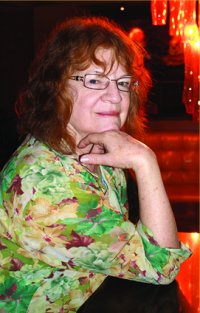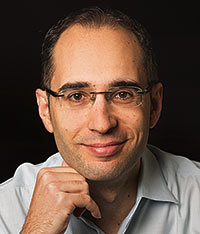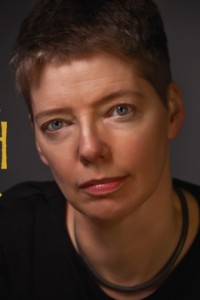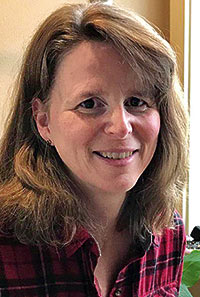Patricia A. McKillip: Fairy Tales Matter
 Patricia A. McKillip was born in Salem OR. She went to San Jose State University in California, receiving a BA in 1971 and an MA in English in 1972.
Patricia A. McKillip was born in Salem OR. She went to San Jose State University in California, receiving a BA in 1971 and an MA in English in 1972.
Her first publications were short children’s books The Throne of the Erril of Sherill and The House on Parchment Street (both 1973). Her first longer novel, The Forgotten Beasts of Eld (1974), won a World Fantasy Award. Other SF/fantasy novels include the Riddle-Master trilogy: The Riddle-Master of Hed (1976), Heir of Sea and Fire (1977), and Locus Award winner and Hugo and World Fantasy Award finalist Harpist in the Wind (1979); duology Moon-Flash (1984) and The Moon and the Face (1985); adult SF Fool’s Run (1987); The Changeling Sea (1991); duology The Sorceress and the Cygnet (1991) and The Cygnet and the Firebird (1993); The Book of Atrix Wolf (1995); Nebula Award finalist Winter Rose (1996); Song for the Basilisk (1998); Nebula Award nominee The Tower at Stony Wood (2000); World Fantasy and Mythopoeic Award winner Ombria in Shadow (2002); In the Forests of Serre (2003); Alphabet of Thorn (2004); World Fantasy Award finalist Od Magic (2005); Mythopoeic Award winner Solstice Wood (2006); The Bell at Sealey Head (2008); and The Bards of Bone Plain (2010).
Other books include non-SF children’s book The Night Gift (1976); adult contemporary novel Stepping from the Shadows (1982); shared-world novel Brian Froud’s Faerielands: Something Rich and Strange (1994), a Mythopoeic Award winner; and collections The Throme of the Erril of Sherill (1984) and Harrowing the Dragon (2005).
McKillip received a World Fantasy Life Achievement award in 2008. She lives in Oregon with husband David Lunde.
Unofficial site: Patricia McKillip
 ‘‘Bards of Bone Plain was an exhausting book to write. It took a long time and very hard work, over the course of about four years. The original idea for it didn’t involve the kind of mirror imaging I ended up using. The central theme was simply to explore the idea that yes, things fantastical matter: fairy tales matter, symbols matter; they speak to us in very intimate ways, and if we need them they are there. That was the whole point of writing the poem about the ‘Three Trials’ and all that.
‘‘Bards of Bone Plain was an exhausting book to write. It took a long time and very hard work, over the course of about four years. The original idea for it didn’t involve the kind of mirror imaging I ended up using. The central theme was simply to explore the idea that yes, things fantastical matter: fairy tales matter, symbols matter; they speak to us in very intimate ways, and if we need them they are there. That was the whole point of writing the poem about the ‘Three Trials’ and all that.
‘‘I had envisioned a totally different kind of character, a bleaker character who really deserved the fate that he had. But he wouldn’t come out; I couldn’t make him do it. It’s like Connie Willis says: I can’t do that much darkness. Then I had an idea of moving through three different sections of background: the early one where they built the school, and then the building of the city (which would be kind of medieval), and then the modern city. At one point it stretched into three different books, and I thought, ‘Nobody’s going to sit through all this to get to the modern city.’ Still, it’s an idea I couldn’t give up easily. It was stubborn.
‘‘The rewrite was deadly. At that point I had no faith in the novel whatsoever, but I was trying to do the rewriting just to make it an inch better than it was. There were so many problems! When I had 80 pages of it done, I handed it to my husband to read and he said, ‘This is boring.’ He was right; I thought it was boring too, but I wanted a second opinion. So I just started all over again, and finally I had this breakthrough.
‘‘I was reading Martin Amis’s memoir about his relationship with his father, Kingsley Amis, and I thought, ‘This is so modern! I want to do something like that.’ I think that’s where the modern plotline came from. Somehow, this poor guy who got skewered by this symbol, this poem – for not taking it seriously, for not understanding fully, for not understanding how much it could mean to him – he was punished. And he was the character who sort of wrapped all the details up for me, from the very beginning of the school to the sort of modern period, which lacked the distinct postwar signature of our 1920s and wasn’t quite modern (because then I’d have to deal with computers).
‘‘My alternative timelines came out of desperation! I’d written the early chapter of the ‘modern’ story first, and then I thought, ‘Well, what if I just fill in the gap to the past with this one main character who’s kind of the leitmotif of all the chapters?’ (He ties all the other points of view together.) It finally started working at that point.
‘‘It wasn’t the book that I had envisioned. But it’s the one that came out, and I love various details about it. I think the two alternating plotlines manage to seem balanced partly because this character from the past was very much in the modern chapters as well. And once the modern story got started, the research part of it came out pretty easily, and I enjoyed doing that.’’
…
‘‘The tropes of mythology and symbolism are the basics. It’s like notation in music: you can change it in really wacky ways, but the sound is always the same, the sound is always there. As long as we need these symbols, then the stories will be written. But if we destroy the old symbols, then we might just have to come up with new ones – who knows?’’


 Excerpts from the interview:
Excerpts from the interview:



Pingback:June 24, 2011 Links and Plugs : Hobbies and Rides